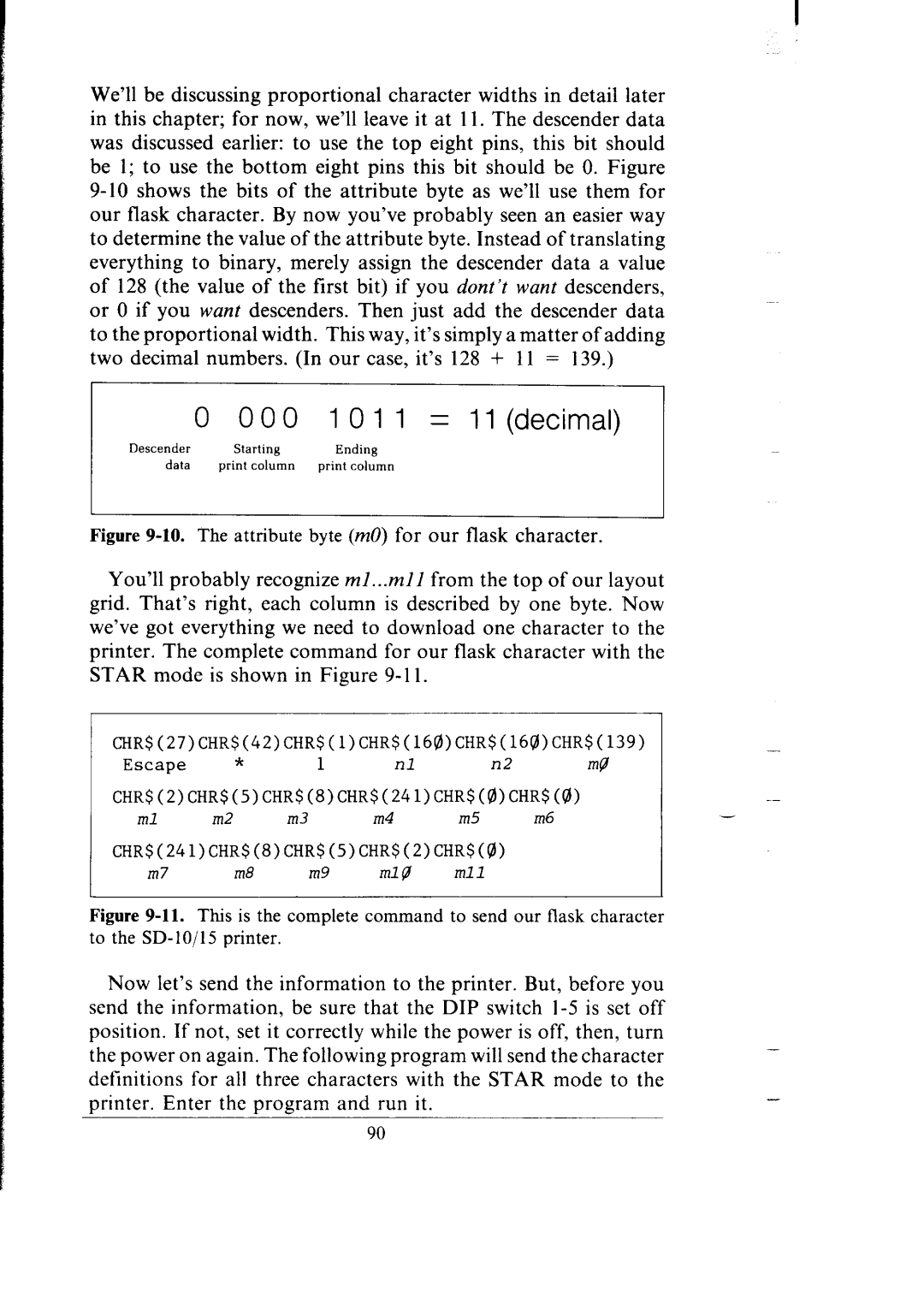
We’ll be discussing proportional character widths in detail later in this chapter; for now, we’ll leave it at 11. The descender data was discussed earlier: to use the top eight pins, this bit should be 1; to use the bottom eight pins this bit should be 0. Figure
0 000 1011 = Il(decimal)
DescenderStartingEnding
data print column print column
I-
Figure 9-10. The attribute byte (4) for our flask character.
You’ll probably recognize ml...&1 from the top of our layout grid. That’s right, each column is described by one byte. Now we’ve got everything we need to download one character to the printer. The complete command for our flask character with the STAR mode is shown in Figure 9- 11.
~R$(27)CHR$(42)CHR$(l)CHR$(l6~)CHR$(l6~)CHR$(l39)
Escape |
| * | 1 | nl | n2 | mg |
CHR$(2)CHR$(5)CHR$(8)CHR$(24l)CHR$(@)CHR$(@) | ||||||
ml | m2 | m3 |
| m4 | m5 | m6 |
CHR$(241)CHR$(8)CHR$(5)CHR$(2)CHR$(@) |
| |||||
m7 |
| m8 | m9 | ml@ | ml1 |
|
L |
|
|
|
|
| I |
Figure 9-11. Thisisthecompletecommand tosendourflaskcharacter
totheSD-lo/l5printer.
Now let’s send the information to the printer. But, before you send the information, be sure that the DIP switch
-
-
90
